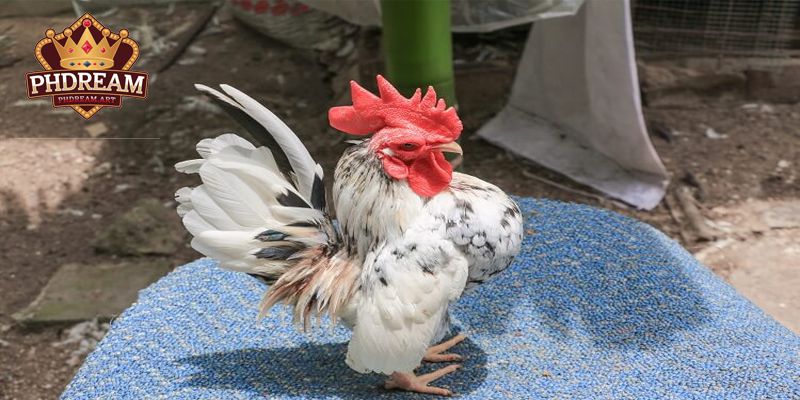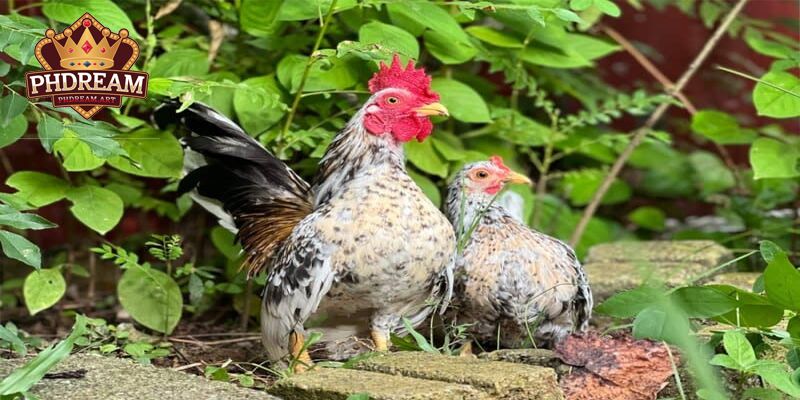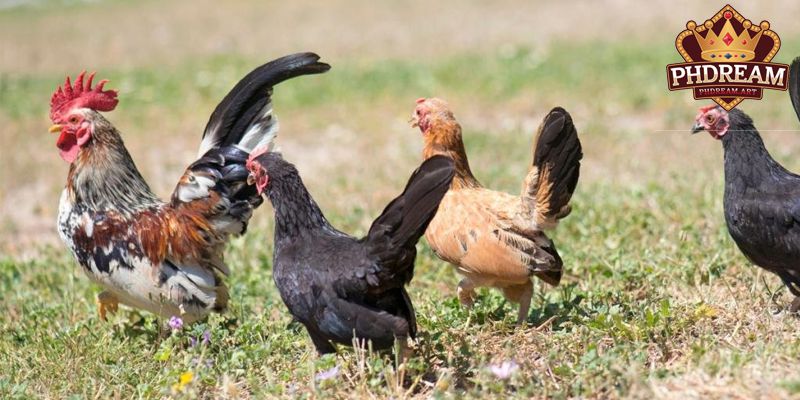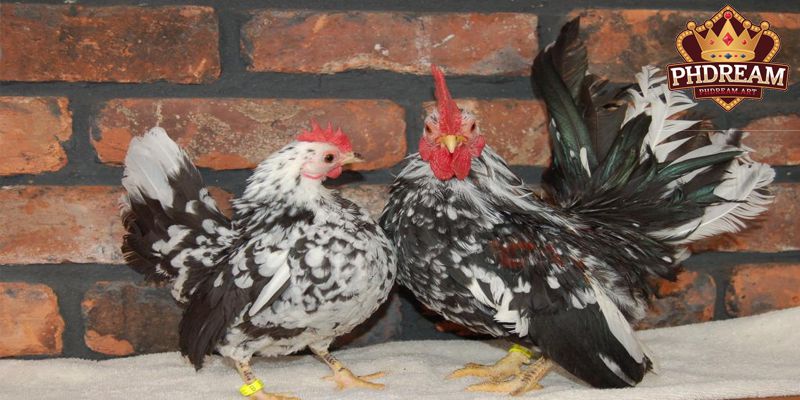Serama chickens are no longer unfamiliar to many who love the challenging and exciting game of cockfighting. This unique breed comes from Malaysia and has won the affection of many players worldwide due to its small size, elegant appearance, and highly competitive nature. If you’re curious about this top-tier fighting chicken, follow our article below.
Introduction and Origin of the Serama Chickens
The Serama chicken is known as the smallest chicken breed in the world, originating from the state of Kelantan, Malaysia. It is believed to be the result of crossbreeding between the local Ayam Kapans and smaller breeds such as the Japanese Bantam or the Black chicken. First introduced at a poultry exhibition in Malaysia, this breed has made a strong impression and is popular in many countries like the USA, UK, Philippines, and Thailand.

Serama chickens are quite expensive, with adult chickens ranging from 2 to 4 million VND, while those that meet competition standards can be priced over 20 million VND. Nowadays, they are becoming more and more popular and widely bred in our country, especially in exciting cockfighting competitions.
Characteristics of the Serama Chickens
To gain a deeper understanding of this breed, let’s take a closer look at its unique physical characteristics and distinct personality traits, as highlighted by PHDREAM. Exploring these aspects will provide valuable insight into what makes this breed so special, both in terms of appearance and temperament. From its compact size and striking features to its bold and confident nature, there’s much to discover about what sets this breed apart from others in the cockfighting world.
Prominent Physical Characteristics of the Serama Chicken
The Serama chicken stands out with its incredibly small size, weighing only between 200 and 500 grams and usually measuring 15 to 25 cm in height. Its feathers are extremely diverse, with a variety of colors compared to the original version, ranging from common white, black, and yellow to more vibrant mixed colors. The rooster has a bright red comb, while the hen’s comb is smaller and less noticeable.

The tail of this bird is a very important highlight, being strong and contributing to its majestic and distinctive appearance. The Serama has a characteristic posture, with its chest thrust forward, head tilted backward, and tail standing upright almost touching the neck, while its wings hang down nearly touching the ground. This posture exudes pride and majesty, potentially generating a strong mental power when entering a fight.
What is the maximum height of Serama chickens?
Did you know that Serama chickens, specifically the Malaysian Serama bantam, are actually the smallest chicken breed in the entire world? These tiny birds are truly miniature, usually standing at just 15 to 25 centimeters tall and weighing in at under 500 grams. Their incredibly small size and charming look come from being a result of crossbreeding Japanese bantams with Malaysian bantams.
Do Serama chickens come with a high price tag?
The price tag on a Serama chicken can actually vary quite a bit, largely depending on their breed quality and their specific lineage. On average, you can expect a fully grown Serama to cost anywhere from $50 to $150. Despite that price, many poultry enthusiasts see them as a truly valuable investment, all thanks to their unique traits and incredibly charming personalities.
The Distinct Personality of the Serama Chicken
Not only does the Serama chicken have a unique appearance, but it also possesses a very distinct personality that cannot be found in other breeds. Unlike some other fighting chickens, the Serama is very friendly, sociable, and extremely active. In Malaysia, people sometimes keep them as indoor pets and even organize chicken beauty contests to showcase their proud posture and dignified appearance.

However, when entering the battlefield, the Serama reveals a proud and confident personality through its movements. Its head is always held high, slightly tilted forward, and its posture is incredibly majestic. As a result, it’s easy to see a “tiny warrior” that, despite its small size, is a formidable opponent in cockfighting matches, proving to be a very tough competitor.
Is it possible for serama chickens to fight?
You know, Serama chickens, much like other breeds, can definitely get into a scuffle, but they’re typically far less aggressive than traditional gamefowl. They’re actually known for their pretty gentle temperament, so you won’t often see them fighting to the extent that gamefowl do. Their little altercations are usually more like playful sparring, often just a way to figure out who’s boss rather than trying to cause real harm. Generally speaking, Seramas are quite affectionate and social, and they really enjoy a calm atmosphere among themselves.
A Closer Look at Serama Behavior
- Playful Sparring: Especially the roosters, Seramas might engage in some lighthearted sparring. It’s usually just to establish their place in the pecking order or sometimes just for fun.
- Less Aggressive Than Gamefowl: Unlike gamefowl, which are specifically bred to fight, Seramas aren’t naturally aggressive. Because of this, they’re much less likely to inflict serious harm during any conflicts.
- Naturally Friendly: Seramas are quite famous for being friendly and loving, even with other chickens. They tend to prefer the company of their flockmates over fighting.
- Nesting Disputes Among Hens: While hens might occasionally squabble over a prime nesting spot, Seramas are generally more tolerant and less combative than many other breeds when it comes to these minor disagreements.
A Compilation of Essential Serama Chicken Care Tips
To raise the most skilled and strong warriors, it is important to understand the essential care tips for Serama chickens, which PHDREAM has compiled below, as follows:
Chicken Coop Hygiene
The chicken coop for Serama chickens doesn’t need to be excessively large, but it should meet the criteria of being cool, dry, and free from dampness. It is recommended to raise the coop 10-30 cm above the ground and line it with straw and sand to maintain cleanliness. Many people also use small tables to help the chickens practice their stance.

Preparing Suitable Food for Serama Chickens
Preparing food for this breed of chicken is not too complicated, as they eat regular food such as feed, grains, and vegetables, all of which are easy to find. For chicks under 2 months old, it is best to feed them cornmeal or chick feed to ensure proper nutrition. Keep in mind that chickens should not be allowed to become too overweight, as this can distort their shape and slow down their movement.
Breeding
Serama hens typically lay about 3 clutches of eggs per year, with 8-10 eggs per clutch. The hatching success rate is higher when using an incubator. It is particularly important to note that chicks are very sensitive to cold temperatures, so they should be kept warm during their early stages before maturing and starting to reproduce.

Training for Proper Stance
The stance is a prominent and crucial feature for Serama chickens, so this step should be given special attention. To achieve a proper stance, gently massage the chicken’s chest frequently, ensuring its head is held straight and facing forward. This practice will help shape the chicken’s posture and boost its confidence when participating in battles or competitions.
Above are the details about the Serama chicken breed that we would like to share for your reference. Though small in size, it is a living work of art that brings great value. With its unique appearance, friendly and interesting personality, and confident fighting ability, it is undoubtedly a precious warrior in the world of chicken fighting.

